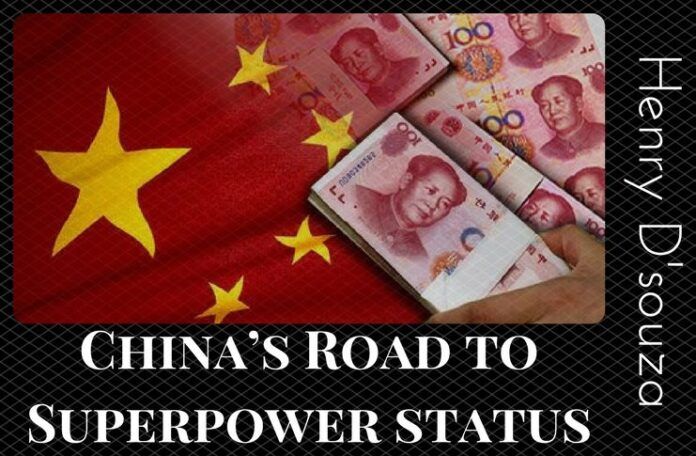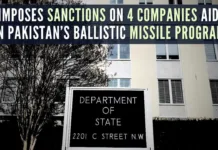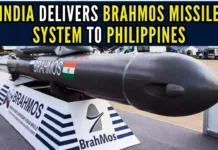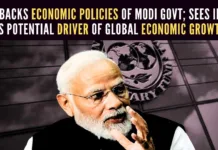
Part 1 of this series can be ‘accessed ‘ here. This is Part 2.
Unlike the US-led Trans Pacific Partnership (TPP) which left China out, the B& R does not exclude the US. In fact, it tries to woo the US by relying on its institutions like the Bretton Woods twins, the World Bank and the IMF. There’s a good reason for this approach. The cost of infrastructure building is prohibitive, which China cannot bear alone or with its allies. China has forked out $40billion for the key development bank, Asian Infrastructure Initiative Bank (AIIB). China has also set aside ¥100 billion (yuan) for the Silk Road Fund, ¥ 60 billion for aid to developing countries, ¥ 300 billion by other state banks to support the project.13 There’s also the China Development Bank, the Asia Development Bank, and the Export-Import Bank for loans. Some think that the project will cost at least $1 trillion. Financiers would raise the figure to $ 5 trillion. Given the global size of the project, the needs of poor countries, and unforeseen events, the figure is likely to be $1tillion a year for some time to come.
Secondly, China wants to introduce a new form of governance, an open architecture where all are invited to participate in peaceful development. China has the experience of raising the standards of the poor in a short time. When some Human Rights advocates14 point to repression in North Korea, Uzbekistan, Xinjiang Province, and peasants not being compensated enough when displaced by infrastructure projects, it should be remembered that China does not interfere in the politics of a country. Nor does it favour others encroaching on human rights in China.
According to Mathew Allen, “the centre of economic power is shifting eastward – And the West is in total denial.”
China has extended its leadership outside Eurasia by forming the Free Trade Area of the Asia Pacific (FTAAP). FTAAP replaced TPP and RECEP. TPP was led by the US and it had military alliances in addition to trade in mind while leaving out China. In addition, there was considerable overlapping: twelve TPP members were also members of the China-led Regional Comprehensive Economic Partnership (RECEP). The end result was that FTAAP would include all APEC countries and China, USA, and Russia, 21 in all in 2014. Despite pessimism about China’s performance, China recorded a 6.5% growth rate in the first quarter of this year, above the predicted 6.3%.15 In this case of Pacific trade, China acquired the leadership by default, since President Donald Trump said that TPP was a bad deal and that it would be scrapped on day one of his Presidency.
China has gained additional strength by incorporating Putin’s 2011 dream organisation, The Eurasian Economic Union. Russia was emulating the EU by trying to form an economic union; at the first meeting in 2015 in Belarus, Russia had two supporters, Belarus and Kazakhstan. Today, Putin proudly says his G6 has become G8 with a GDP of $2.4 trillion, and a share of 20% of the world’s gas and 15% of the world’s oil reserves. To function well, EEC needed a population of 300 million, not just 183 million.17 If B& R incorporates EEC, China’s stature will be enhanced at the cost of Russia’s. Hong Kong will be a major financial node for the B& R. According to Mathew Allen, “the centre of economic power is shifting eastward – And the West is in total denial.”16
It appears that Germany has been inspired by B& R. Germany has announced that it will launch a new Treaty of Berlin, with the Compact with Africa (CWA.)
Another institution that will enhance China’s prestige in the Eastern bloc’s version of NATO, the Shanghai Cooperation Organisation (SCO). Its Secretary General Rashid Alimov said that with India and Pakistan as full members, SCO will jump from G6 to G8, with a population that is between 43 and 44% of the world’s total and a GDP of US $33 trillion. SCO will be a trans-national body with four nuclear powers. Tehran, Baghdad, Damascus and Beirut will be the B& R route to the Levant. The forecast is that the retreating IS will make the Hindu Kush their new home with Chechens, Uzbeks and Uyghurs as their fighters.18 Escobar concluded that SCO just became the world’s largest political organisation.
China’s leap to fame is backed by the rising importance of its Yuan as a hard currency. Yongfu Huang,19 a financial expert, explains: important central banks like the European one holds 1% of its foreign holdings in yuan; the yuan has become the third highest contributor to IMF’s Special Drawing Rights with a 10.92 % share versus 41.73% for the dollar, in October 2016; large amounts of trading are done in yuan; swap agreements with various foreign banks have been signed; clearing houses have been set up in places like Singapore, Kuala Lumpur, London and Hong Kong; the China-Qatar trade in yuan is worth $5.7 billion; and, like the ruble, the yuan is backed by gold. China’s top economist Li Daokui sees a robust yuan as China has large trade surpluses and savings.20
Some writers, like Richard Brandt, 21 attribute the US’s declining influence in the world to allies fighting among each other, the end of destabilising the Middle East, the collapse of the GCC and the Syrian war nearing an end. The unipolar world is giving way to a multipolar one.
The B& R is not without its problems. For instance, India blocked China’s plans to build a road near Bhutan on the grounds that China would annexe the country like it did with Tibet. China had also occupied Chumbi Valley near Donglang in 1988. India is a protector of Bhutan. China was furious since the incident came on the heels of India taking part in a military exercise in the South China Sea on May 18, 2017. The Donglang area was sensitive since Bhutan had an army camp in the Zomplri area near the Siliguri Corridor in West Bengal that links these northern states to India. Despite these differences in the Himalayas, no bullet has been fired for over two decades, which is in the spirit of B&R.22
It appears that Germany has been inspired by B& R. Germany has announced that it will launch a new Treaty of Berlin, with the Compact with Africa (CWA.) Germany’s Federal Minister of Finance Wolfgang Schäuble will harness private capital for the development of Africa. It will be backed by Government funds after the Africa Partnership Conference held on June 12-13. Additional capital will also come from the Africa Development Bank, World Bank and the IMF. The African countries that volunteered to join the scheme are Cote d’Ivoire, Morocco, Rwanda, Senegal and Tunisia. All, except Rwanda, are in the western part of Africa.23 This plan resembles the Marshall Plan that the US launched to rebuild Germany after World War II.
Bibliography
- Harry Kris, “Trade Connectivity and India – OBOR impact on foreign trade,” pgurus.com, May 15, 2017.
- Henry D’ Souza, Plato’s Atlantis is Bharat’s India, self-published, Mississauga, 2001; revised edition, 2008.
- Dan Steinbock, “Belt and Road could change the twenty-first century,” chinadaily.com.cn, 15.5.2017.
- F.K. Utoikamanu, “Initiative offers potential for sustainable growth,” chinadaily.com.cn, 16.5.2017.
- Anastasia Sukhoretskaya, “Belt & Road: The route to stability in the world,” chainadaily.com.cn, 14.5.2017.
- Doug Tsuruoka, editor-at-large of Asia Times, “Finland could serve as China’s Arctic gateway for B&R,” chinadaily.com.cn.
- Dr. Muhamad Shahbaz, “How the B&R could become a health corridor,” chinadaily.com.cn, 17.5.2017.
- M.K. Bhadrakumar, “Russia stands to gain from China’s One Belt and One Road Megaproject,” russiainsider.com, 18.5.2017.
- “China sends troops to open first overseas military base in Horn of Africa,” russiainsider.com, July 12, 2017.
- Mina Pollman, “Even JThe EEC pan is now considering joining China’s one belt, one Road,” thediplomat.com, June 15, 2017.
- Pepe Escobar, “The New Silk Road will go through Syria,” russiainsider.com, July 13, 2017.
- Markar Esayan, “An opportunity for global peace: the Silk Road project,” daily sabah.com, May 19, 2017.
- Paul Goncharoff, “US is in denial as Beijing lays groundwork for New Economic Order,” russiainsider.com, May 14, 2017.
- Sophie Richardson & Hugh Williamson, “China: One Belt, One Road, Lots of Obligations,” eurasianet.org, May 12, 2017.
- Dan Steinbock, “China is re-defining the Free Trade in Asia Pacific,” chinadaily.com.cn, 22.11.2016; also, Donald J. Lewis, “China issues in new FTAAP era,” chinadialy.com.cn, 22.11.2016.
- Mathew Allen, “The Center of economic power is shifting eastward – And the West is in total denial,” russiainsider.com, April 18, 2017.
- Vladimir Putin’s Eurasian Economic Union gets ready to take on the world,” theguardian.com, October 28, 2014; Pepe Escobar, “Hong Kong’s role for the next 20 years? Silk Road “Super connector,” atimes.com, July 1, 2017; see also Galiya Ibragimov, “ Does the Eurasian Economic Union have a future,” russiainsider.com, April 9 2015; see also Dmitry Bokarev, “The Eurasian Economic Union flexes its muscles,” journal-neo.org.
- Pepe Escobar, “SCO just became the world’s largest political organisation,” russiainsider.com, June 21, 2017.
- Yongfu, “The growing role of RMB in global reserve currency system,” atimes.com, June 26, 2017.
- Xin Zhiming, “Top economist sees robust yuan,” chinadaily.com.cn, 28.6.2017; also see Vladimir Odintsov, “The global de-dollarization and US politics,” journal-neo.org, 2.2.2016.
- Richard Brandt, “Qatar crisis reflects feuds in Washington and declining US global influence,” russiainsider.com, June 15, 2017.
- E. Jaya Kumar, “What lies behind the flare-up at the India-China-Bhutan junction?”atimes.com, June30, 2017.
- Wolfgang Schäuble, Germany’s federal Minister of Finance, “A better investment framework for Africa: arabnews.com, June 8, 2017.
- Part2 – China’s Road to Superpower status - July 20, 2017
- Part1 – China’s Road to Superpower status - July 18, 2017
- P2 – Can or should Qatar be ostracised? - June 29, 2017











This is just continuation of the same old Chinese propaganda. I’d expect the author to counter all the criticisms of China by India and others reg Doklam conflict, OBOR, South/ East China Sea, quarrels with neighbours and other Asian countries, etc. Then, this article will have some meaning; else, it will appear only as a one-sided China-PR exercise.
The Chinese bullshit continues..build a “harmonious” china first where people r free to think what they want and say what they want without being serfs of the politburo and army..world does not need this Chinese “harmony”